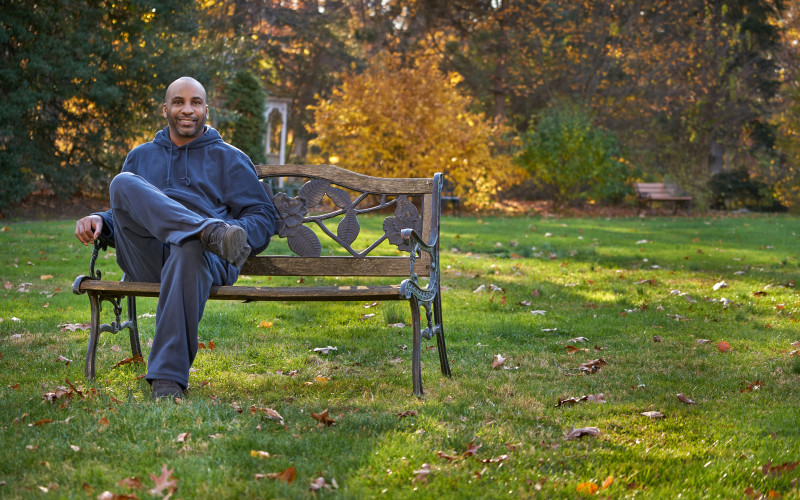Stroke patient ‘couldn’t ask for a better team’

For years, Bruce Lancaster took medication for hypertension. But the drug made him feel anxious. So he stopped taking it.
An Army veteran who had run track and played football, Lancaster figured he was in good shape. He was 48 and worked in construction.
“I thought my body was used to having high blood pressure, that it was normal for me,” he said.
He didn’t realize that hypertension rarely shows warning signs. It’s called “the silent killer” because it can go undetected until someone has a stroke or heart attack.
For Lancaster, that day was Aug. 27, 2014.
“I was at home, relaxing, watching TV, a quiet mid-morning,” he said. “All of a sudden, I felt so flushed I had to get up and adjust the air conditioning.” Turning up the AC didn’t make him feel better. He was confused. His head throbbed. He headed for the bathroom and lay down on the cool tile floor.
Two hours later, his 11-year-old son Caleb came home and found him. Caleb immediately dialed 911.
“I remember him talking to me,” Lancaster says. “He said, ‘Dad, stay with me, stay with me.’”
He was rushed to Christiana Hospital, a Joint Commission and American Heart Association/American Stroke Association Comprehensive Stroke Center, where doctors quickly determined that he had suffered a hemorrhagic stroke. This is a brain bleed that occurs when a weakened vessel ruptures and bleeds into the surrounding brain. It’s an unusual event, accounting for only 13 percent of stroke cases, according to the American Stroke Association.
“High blood pressure is the most common cause of hemorrhagic stroke, accounting for 60 percent of cases,” said Jonathan Raser-Schramm, M.D., Ph.D., medical director of the Stroke Program and the Stroke Treatment and Recovery Unit (STAR).
Lancaster was closely monitored in the Lanny Edelsohn, M.D. Neuro Critical Care Unit, where his blood pressure was kept under control.
As his condition improved, he progressed to the Stroke Treatment and Recovery (STAR) Unit, a specialized step-down unit for patients who are recovering from stroke. Nurses assess patients in the STAR Unit at least once every four hours. They also educated him and family members about his medications and the importance of exercise and a heart-healthy diet.
Lancaster continued his treatment at the Center for Rehabilitation at Wilmington Hospital.
“At first I had a difficult time getting around but I was ready to work hard,” he said. “Speech therapy, physical therapy, occupational therapy. Everything from exercises for cognitive thinking and balance, to practicing getting in and out of the shower.”
As an outpatient, his social worker helped him to arrange for transportation to and from physical therapy. He was impressed with the way the multidisciplinary staff worked together to provide expert care and help him navigate the system.
“Everyone was professional and they were compassionate, the best that they could be,” he said. “I couldn’t ask for a better team of people.”
Lancaster continues to see Dr. Raser-Schramm in the stroke clinic at the Center for Heart & Vascular Health. He exercises regularly, taking long walks. He eats a low-fat, low-sodium diet.
“From fried foods to baked foods,” he said. “My 11-year-old is the food czar. He looks after me.”
He takes his medications as directed. His doctors replaced his previous prescription with medications that don’t have unpleasant side effects.
Lancaster is intent on staying well. And he wants to share his new appreciation for life with others by volunteering at Christiana Care.
“I was at death’s door and they saved my life,” he said. “Now, it’s my turn to give.”